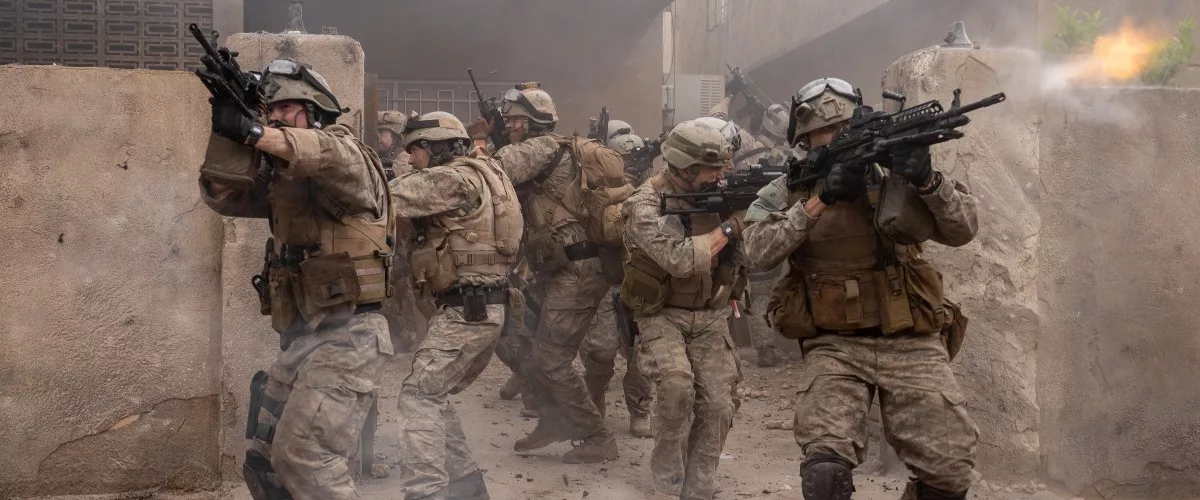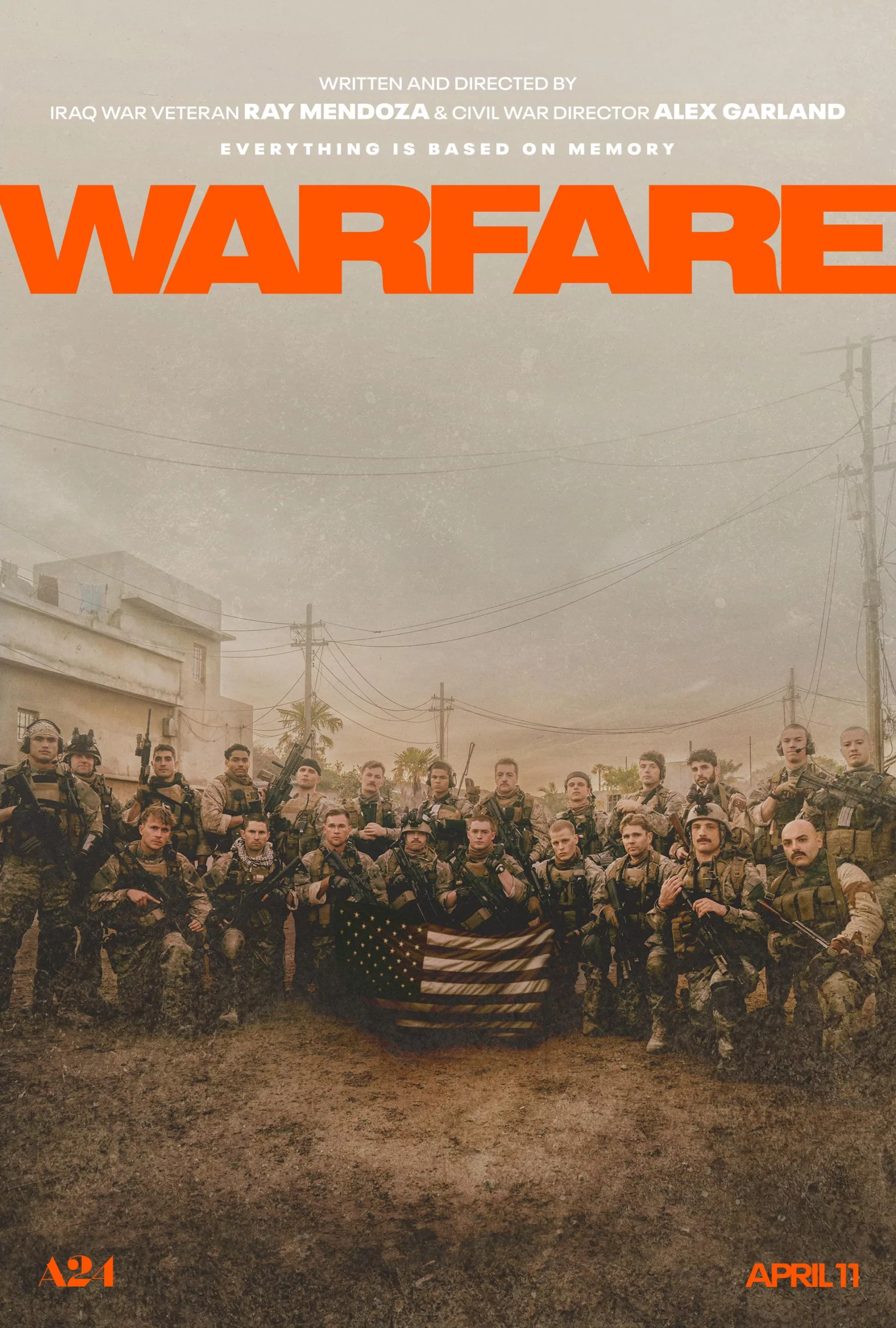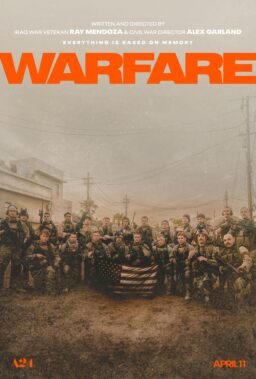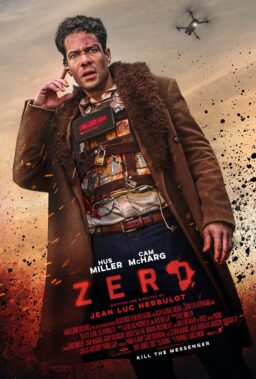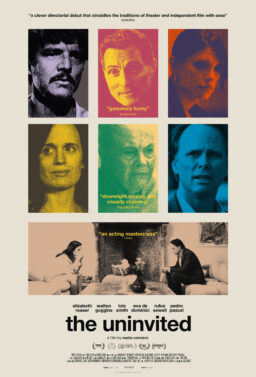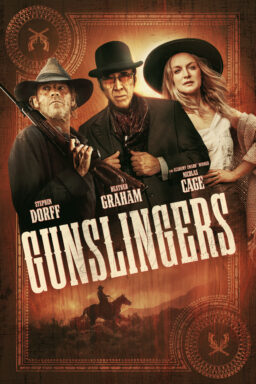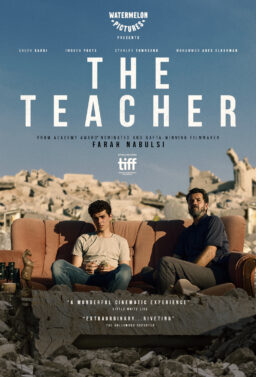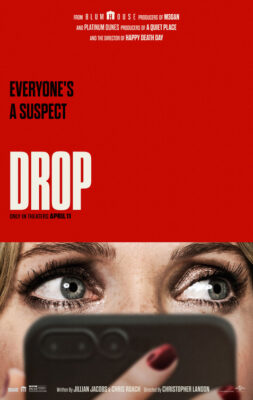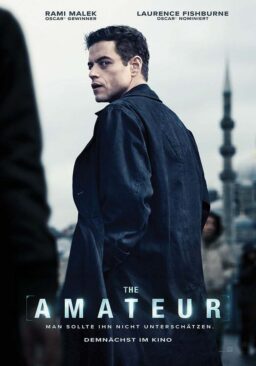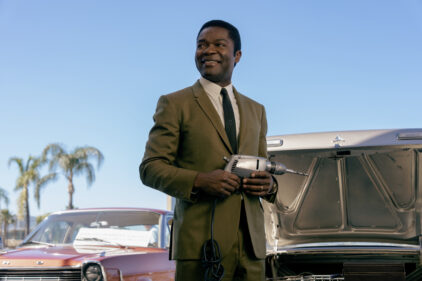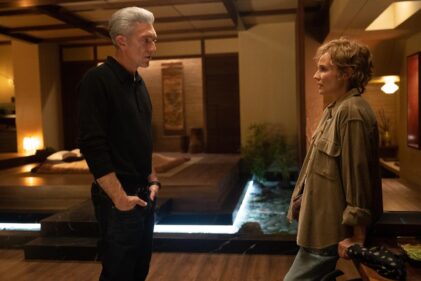“Warfare” tells the story of a Navy SEAL team that, in 2006, got pinned inside a house in Ramadi, Iraq during the American occupation, took heavy casualties, and finally escaped with its surviving members in tatters. This was not a major battle in the conflict or by the standards of any conflict. But it happened. Specifically, it happened to the film’s cowriter and co-director Ray Mendoza, a military advisor on “Civil War,” the speculative fiction film by Alex Garland (“Ex Machina,” “Annihilation“). Mendoza told the story to Garland, who decided to make it his next movie, and partner with Mendoza in his first effort behind the camera.
The result is an odd experience, at once overwhelming and numbing, immediate and clinical. It immerses viewers in the noise, blood and chaos of combat as it was experienced roughly 20 years ago in Iraq, with such physical, visual and sonic detail that it can genuinely be characterized as a rare war movie that doesn’t glorify its subject, even accidentally. It’s a “you are there” movie.
But to what end? Mendoza is portrayed onscreen by D’Pharaoh Woon-A-Tai, one of the main characters on the FX series “Reservation Dogs.” But he’s just one character among many in a cast that has deliberately been shorn of the usual war movie characterization tricks, like giving somebody a catchphrase or a significant “lucky” object or a monologue revealing a dream or fear or the fact that they just got married to their childhood sweetheart (which in older movies is how you know who’s going to die first). Nor are we given any glimpses of the emotional interior of Mendoza or any of his comrades, beyond the obvious fear of getting wounded or killed and the fleeting bursts of inspiration that enable them to help fallen comrades and participate in the group’s increasingly desperate efforts to escape.
The compressed timeframe of the storytelling (about half a day, it seems?), plus the fact that we get dropped in without anything resembling traditional characterization, means that it’s hard, if not impossible, to engage with “Warfare” in the manner of other war movies. At times, it almost seems as if Mendoza and Garland have used actors and recreations to devise not just a drama based on real events but a sort of faux-documentary—a thing that could be briefly mistaken for “real” if you chanced across it on television.
The carefully measured opening sequence shows the SEALs rousting a family from their beds but then putting them under what I guess is a kind of protective custody (though it sure looks like detainment or captivity) and using the house as a position to observe enemy action. There’s a slow buildup to the revelation (via radio) that the area is going to be without air support for a while and that local gunmen have decided to take the opportunity to move on the Americans.
All hell breaks loose soon thereafter, and the SEALs scramble to make a plan out of the bureaucratic non-decisions of people they can appeal to but cannot sway. A Bradley fighting vehicle that’s supposed to rescue half of the SEALs gets destroyed by an explosive device, the higher-ups don’t want to dispatch a replacement because they don’t want to lose another expensive piece of equipment. There are protocols governing how and when and why things happen. Nobody wants to get disciplined or demoted for doing the wrong thing. Ass-covering becomes as much a priority as saving colleagues from being killed or maimed, until the moment when the men realize that if they don’t start fudging facts and breaking rules, they’re all going to leave in body bags.
In the end, the effect is as both alienating and fascinating. Sometimes, Mendoza and Garland will linger on a perspective that’s not anchored in the house that’s under siege, as when the movie cuts to blurry black-and-white views of streets as seen from aerial surveillance craft, and human lives become pixels in a horrible videogame.
The sound design team (fourteen people, per IMDb) makes it feel as if you’re listening to an entire neighborhood as it gradually collapses into mayhem. Early on, there are sounds of human voices talking, vehicles moving from point A to point B, even some birds and ordinary household machines. When a bomb goes off, you hear a bunch of dogs suddenly begin barking. As in a handful of other movies, there is no score, which means you pay closer attention to the sound than you normally might, and start to understand how certain sounds mean that certain things are just about to happen, or that they’re the cue to execute the next step in a plan. There are little details here that I haven’t seen in previous post-9/11 combat movies, like the way that fighters come in low in a “show of force” that’s mainly about pausing enemy action and stirring up dust that the Americans can use for visual cover; or the observation that extremely loud sounds can cause physical damage as intense as getting punched, kicked, or run into with a car.
The enemy is unseen, for the most part, or seen distantly, through rifle scopes and via surveillance tech. We don’t get to know the family aside from the facts of their situation and the fear that they feel. Clint Eastwood’s controversial hit “American Sniper,” a far more traditional though ultimately richer motion picture, showed the enemy in much the same way that “Warfare” does, and was attacked for being xenophobic and/or racist, but I don’t see how the approach of “Warfare” is all that different, except perhaps for its more measured and in some ways rarified approach to technique, which is rooted in an aesthetic philosophy that we can intuit (every moment, statement and detail is based on the memories of people who were there) but that is never explained to us (which is not to say that it should have been blatantly exposited, merely that the presentation could’ve been less jagged and opaque). There’s a moment near the end where you briefly think that the movie might shift its point-of-view to that of the family, but it’s over before it can turn into anything significant.
“Warfare” is a tight movie, 95 minutes plus credits. That’s for the best. If it had gone on longer, we might’ve started to miss the more typical/cliched elements we associate with historical fiction on film, and question whether those have been replaced here with something deeper and smarter or with nothing. The end credits juxtapose pictures of the actors who played the SEALs with the actual guys. I’ve never understood the point of movies doing this, as acting is not a contest to see who can look the most physically like the person they’re portraying (that’s cosplay). It’s especially puzzling here, as none of the actual participants are recognizable to anyone who didn’t personally know them, and in a lot of cases, the face of the real person has been blurred.
“Warfare” is a viscerally impressive work. Your body feels it. But you might come away from it wondering what the point is, other than the fact that it happened to someone. And you wouldn’t be wrong to ask that question.

